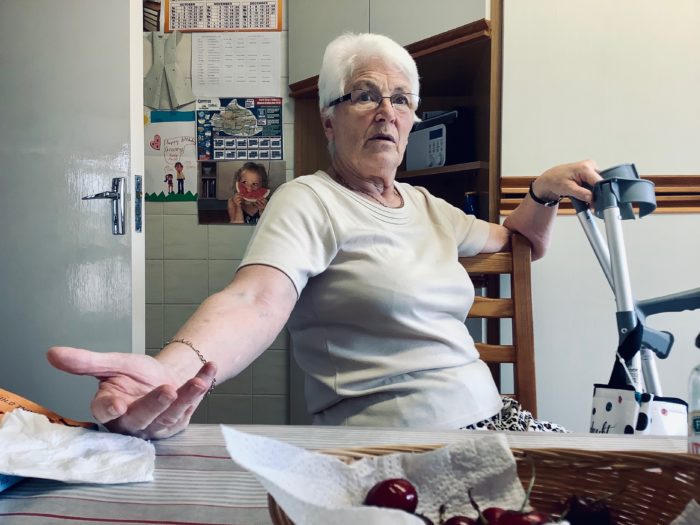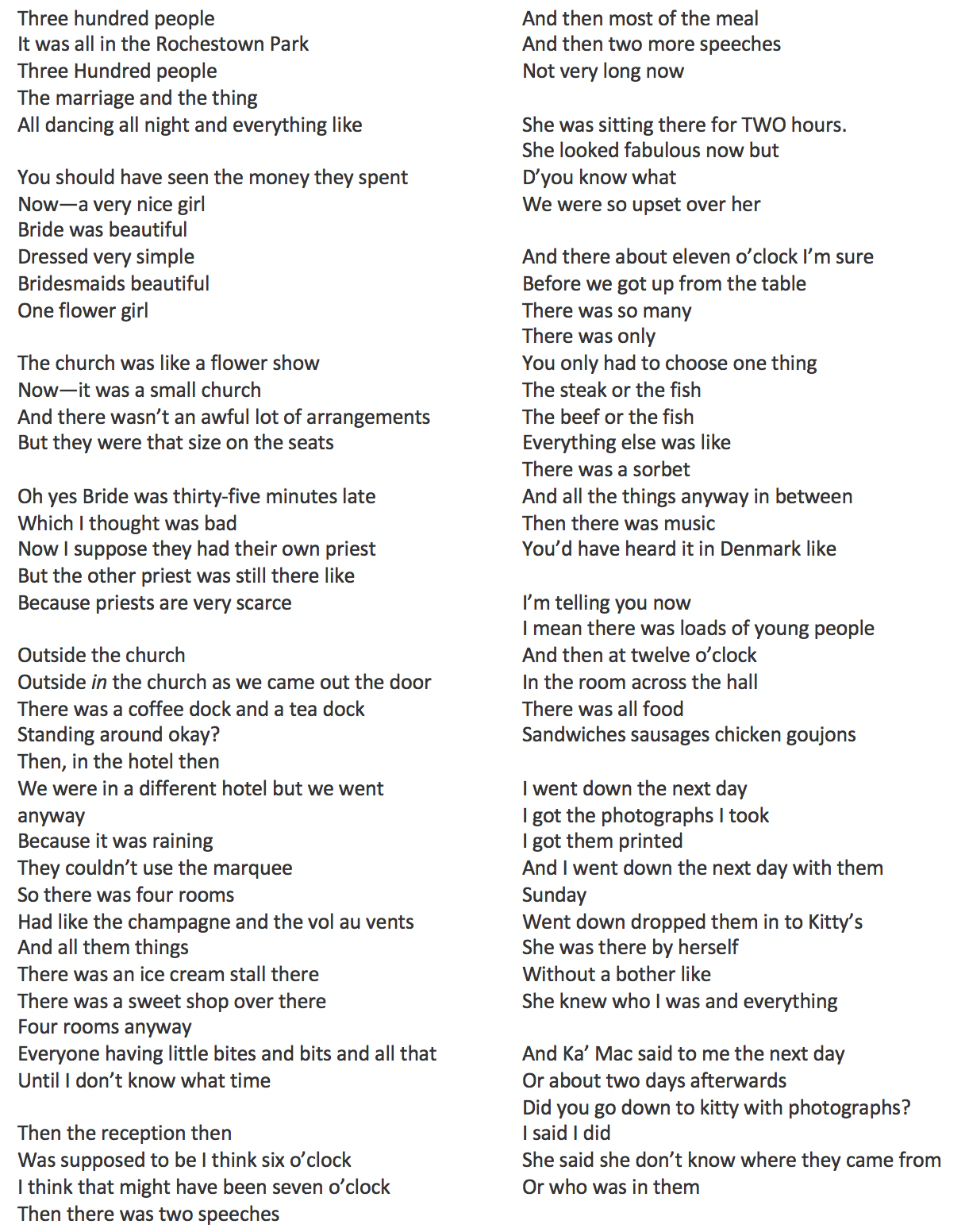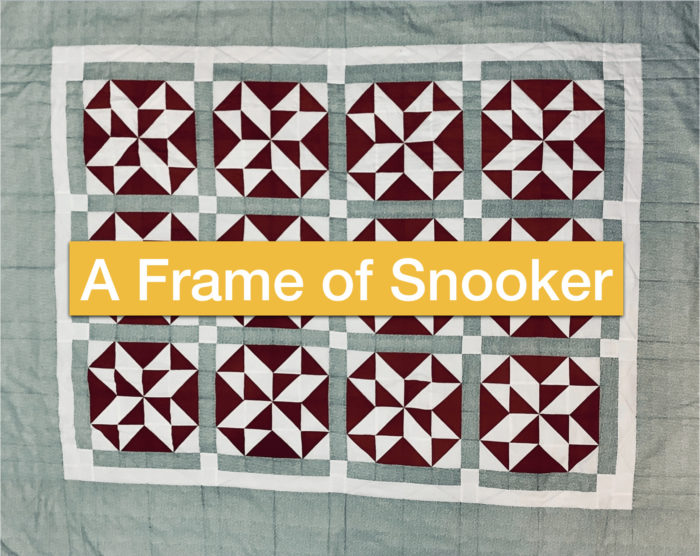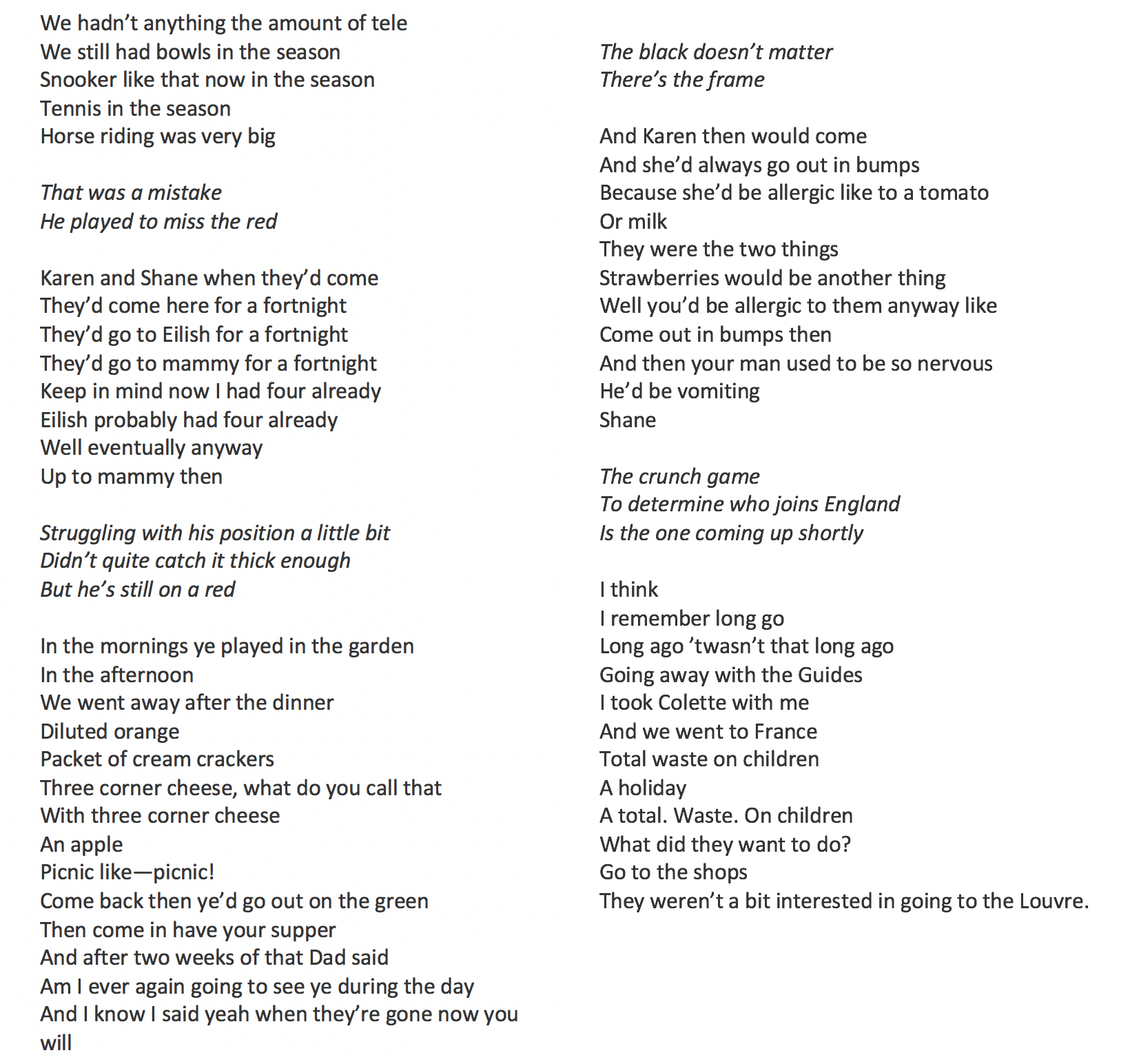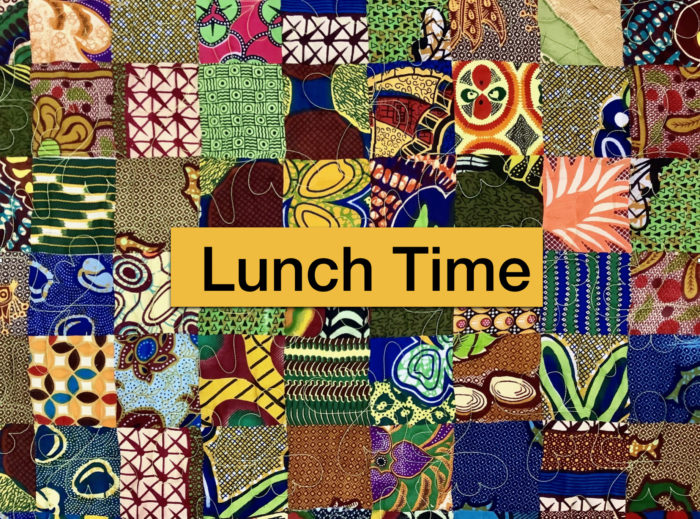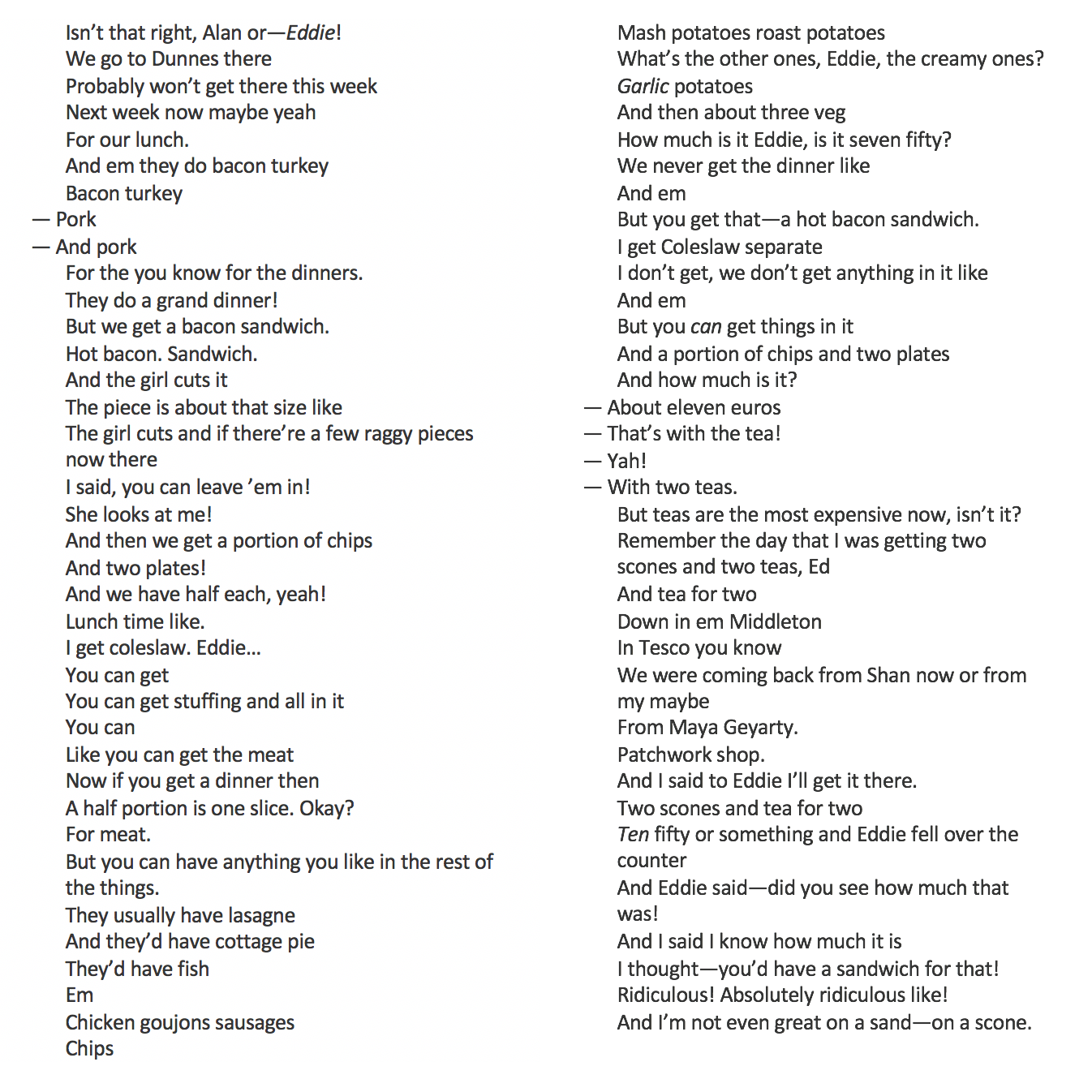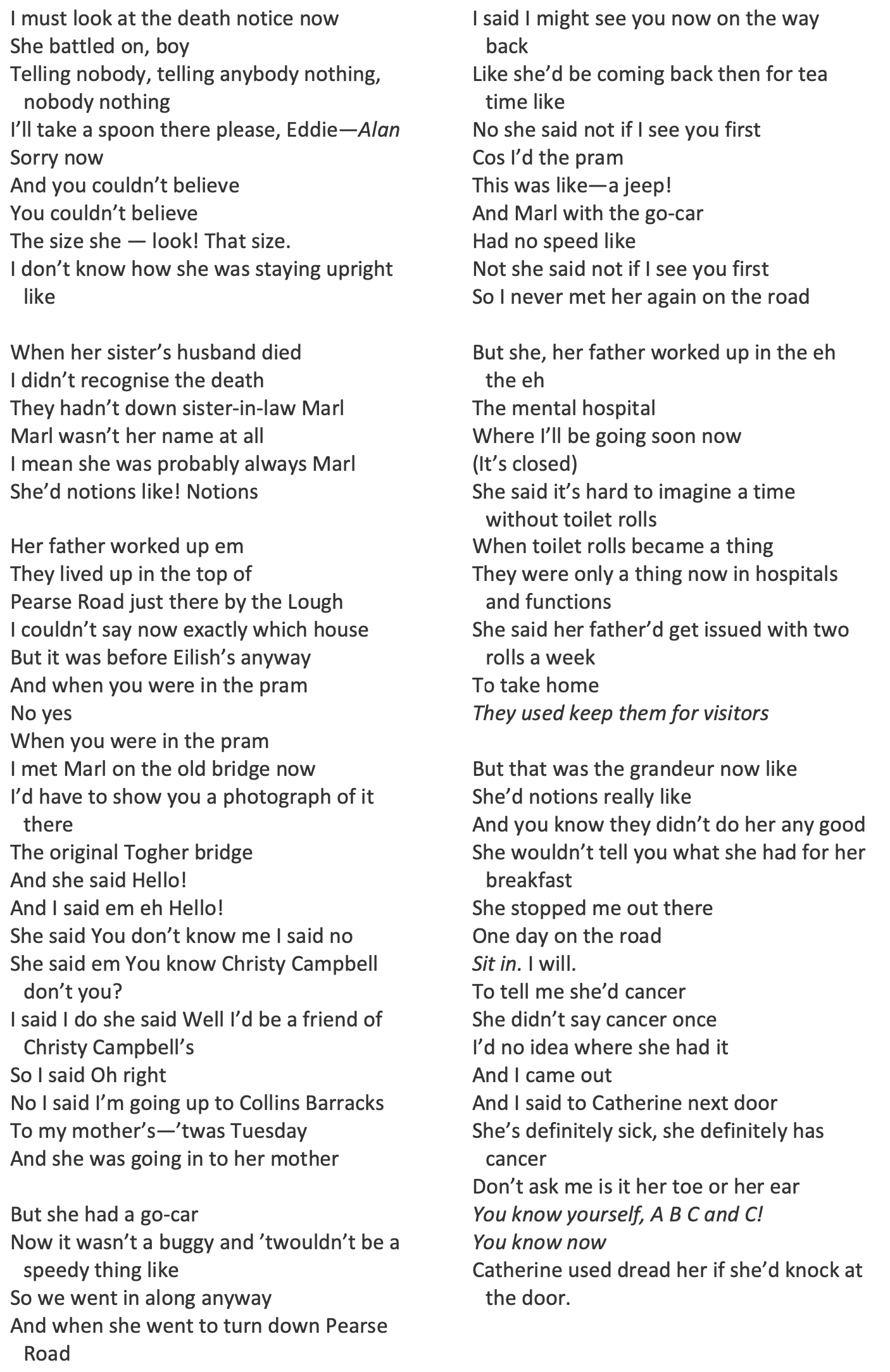Response 40 - Monologues from Cork
Dear Marie,
My task was to document the experience of caring for my mother after her recent hip replacement operation. How—you asked— would we negotiate each other’s space? What conversations would we have? What type of care would I give?
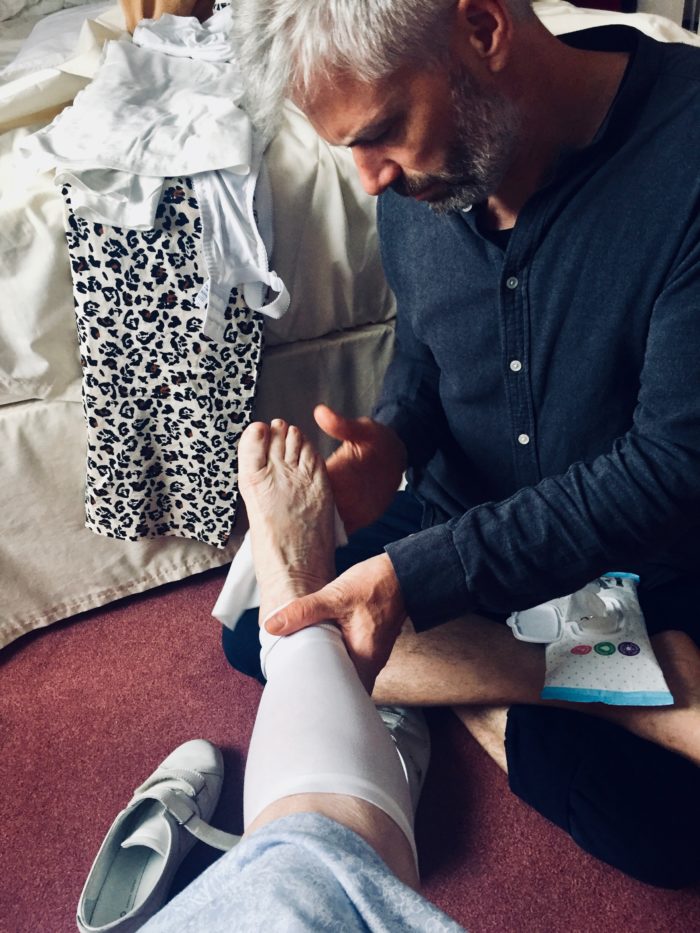
Son, wiping feet
The answer to the third question is simple. Tie her house shoes, retrieve her crutches, sit and listen. The last, especially.
Mam is one of the world’s great monologists. Conversationalist, maybe, not so much. But mam could monologue for Ireland. Mam could monologue for the United Nations.
It’s this faculty I have tried to record in the objects below—four poems (of a sort) condensed from the discourse of the convalescent. Their titles are superimposed on photographs of the patchwork quilts that mam herself creates with great care and patience.
1
2
3
4
PS. (10 July)
Project friend and collaborator with Marie, Mette Terp Høybye, tweeted that she would be curious to hear more about whether the above constitutes a method, a product, or a process as practice, 'or something in between? Maybe sheer sensitive improvisation...' So I thought I'd add a few lines on the process.
While home with my mother, I made hours of recordings of her talking, and made indicative notes and timings as striking topics or constructions came up. I imagine this is standard practice for interviewers and oral historians. As I listened, I also thought about how I could give form to the monologues, and the idea of 'curated' poems occurred to me early. I had in mind a fascinating radio interview I heard with the African American poet Tracy K. Smith, who talked of using found materials unchanged in her own writing because their eloquence could not be improved. She gave the example of a letter from a mother to Abraham Lincoln in which the woman asked the president to arrange for her soldier son to return to her because 'I am old and my head is blossoming for the grave'. So, I thought, my role should be as curator and giver-of-shape to my mam's disquisitions. There were constraints of time and space, of course: to do justice to mam's digressions, especially, would have required an Miltonian scale I couldn't muster. But at least the reader can get a sense of her linguistic tics and creativity, and some inkling of intonation, even perhaps of accent. The choice to lay it out as poetry, and not as prose or as interview-style dialogue with my occasional prompts, was to give the discourse a particular sort of dignity that survives, I hope, any gentle sense of satire. The extent of curatorial interventions of omission, trimming and combination differ. 'Lunch Time' is almost straight transcription, 'A B C and C' omits a description of Marl's children, while 'After the Wedding' actually combines accounts of two separate events, and of course 'A Frame of Snooker' interpolates phrases from the unseen commentator describing on TV the game that prompted mam's reminiscence.
In any case, the 'method', and I think of it as a scholarly method, is one of creative curation. It's one I've used before, in the collage of interviews I made in the final section of my book on the cinepanettoni, the Italian genre of Christmas comic films. In that case the montage of twenty-four interviewees and their contrasting perspectives was intended to give a sense of the controversies that attend the content and popularity of these culturally despised but hugely successful films: the reader was allowed to feel immersed in the debate; my perspective and 'commentary' was absent, or present only as curator-compère. In the case of the poems above, the format is intended to give the reader a sense of the experience of being present, listening. I treat the poems as an affective product, communicating experience as much as content, and as such they/poetry have/has the advantage over conventional academic prose.


